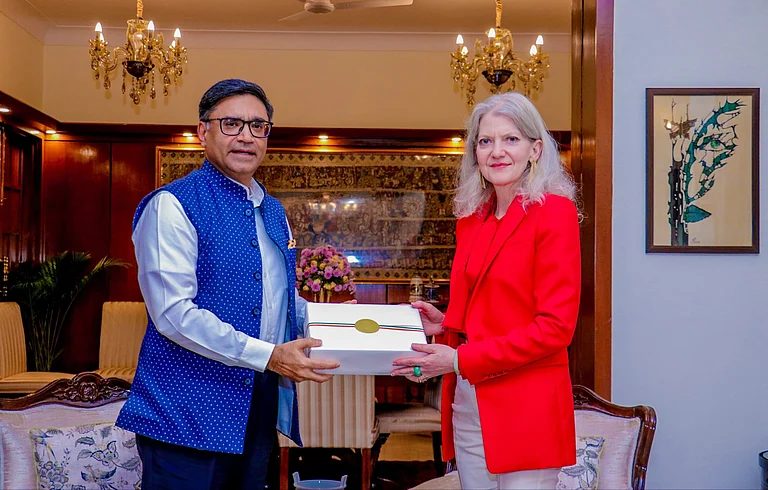This September 1, 2025, issue of Outlook Magazine arrives at a critical moment in India’s economic story. With President Donald Trump announcing that tariffs on Indian exports to the United States will rise to 50 per cent, the ripple effects are already visible across industries and regions. The impact will be geopolitical, but as the stories in our cover, ‘The Tariff Weapon’, will show, the scale of disruption in trade also needs to account for the human stories behind it.
From Andhra Pradesh’s shrimp farms to Kashmir’s orchards, from Tiruppur’s textile hubs to Delhi’s courtrooms and beyond, this issue captures the lived realities of those who find themselves on the frontlines of tariffs and other unexpected global tugs of war.
Through in-depth on-ground reports and commentary, we examine the consequences of an economic order being rewritten on a global scale, and the political, legal and diplomatic responses likely to shape the future.
KA Shaji reports from the shrimp belt of Andhra Pradesh (and Digha), where export-quality produce now languishes in ponds and cold storage as the United States buyers grow shy of Indian imports. His story reveals the despair of women workers in peeling sheds, the scale of unsold stock and the fears of an industry tied too closely to a single buyer.
Ishfaq Naseem travels through Kashmir’s orchards to document how a 50 per cent tariff threatens walnut and apple growers whose fortunes depend almost entirely on the United States. Empty godowns and unstable prices show how deeply vulnerable small producers are to shifts in global trade—especially when the threat of imports of American apples is also added on.
NK Bhoopesh, with inputs from Jinit Parmar in Surat, brings us to Tiruppur and Coimbatore, where textile exporters face the harsh maths of tariff hikes. Once a success story of competitive pricing and global scale, the sector now risks losing thousands of jobs as industrialists warn that India’s US $100 billion export ambition could unravel—overnight.
Saiyyad Mohammad Nizamuddin Pasha, writing from Delhi, offers a searing commentary on India’s treatment of refugees compared to stray dogs. Drawing on legal history and the Supreme Court’s recent ruling on the case, he reflects on how colonial-era exclusions echo in the denial of rights to Rohingya refugees.
Raviprasad Narayanan examines how China, India and Russia could respond to Trump’s trade actions. He argues that India’s presence at the SCO summit signalled a commitment to multilateralism, even as Ukraine remains an unresolved issue.
Amir Ali of JNU tracks how India’s foreign policy, once celebrated as a deft balance of allies and alliances, now appears unsteady. He writes on the fading Trump-era bonhomie, the contradictions of India’s Global South leadership and the silence—sometimes enforced—over Gaza, which casts doubt on the coherence of New Delhi’s external strategies.





























